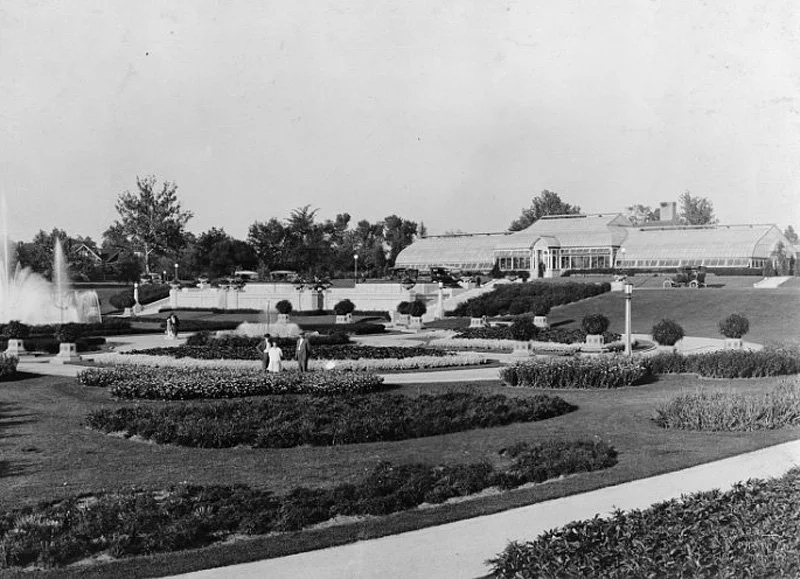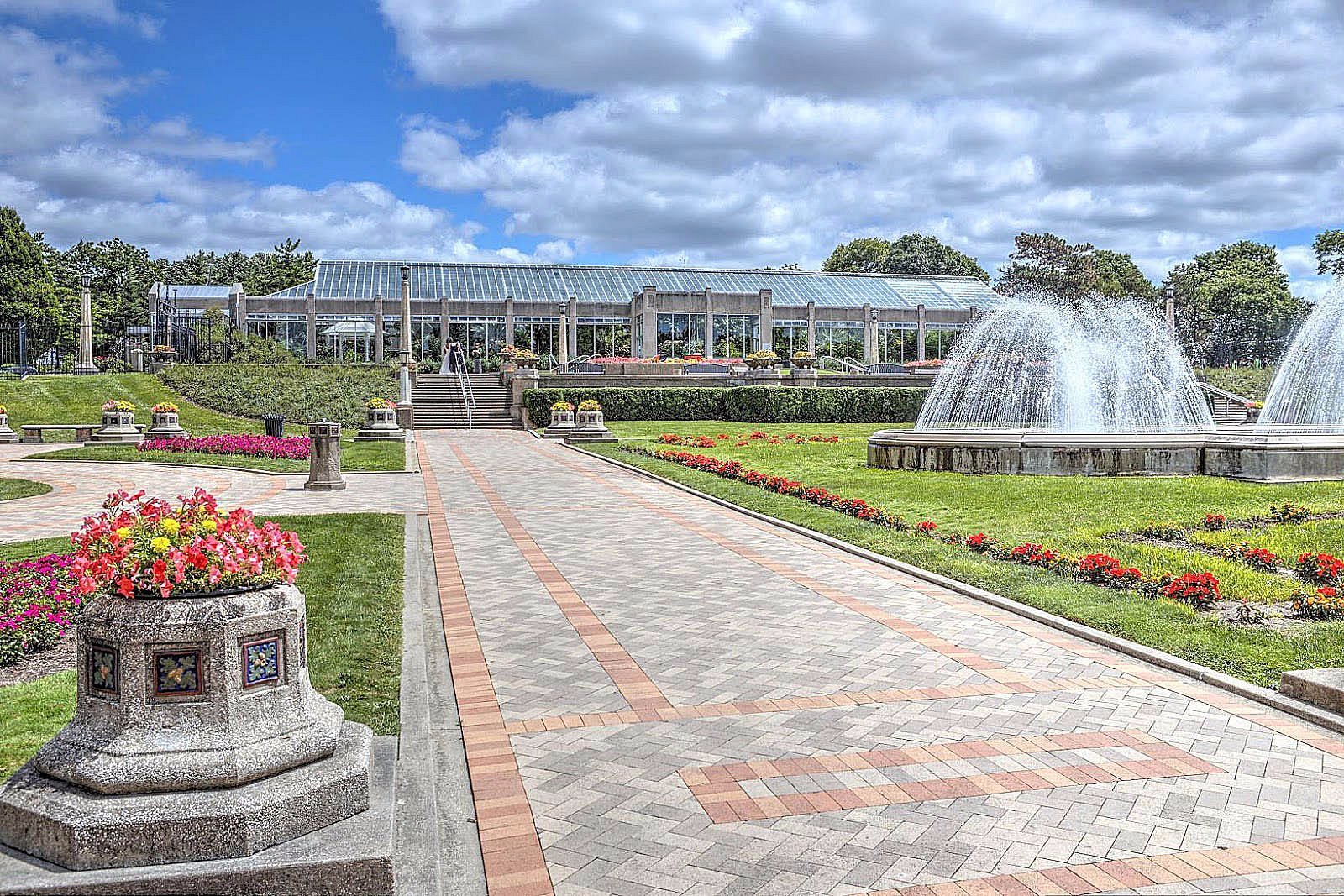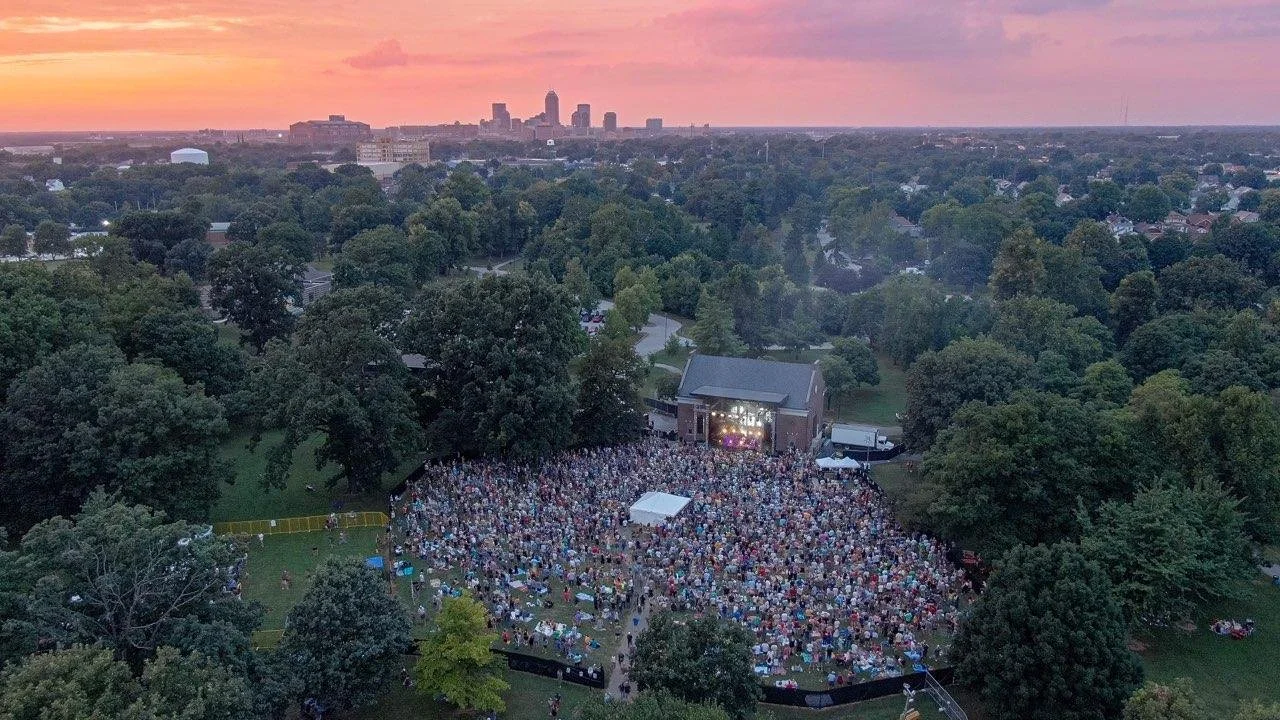INDY’S
OLDEST PARK
Established in 1876, Garfield Park has been a fixture in Indianapolis longer than any other park in the City and boasts a history that stretches back even farther than its current life as a park.
The first known record of Garfield Park appears in 1822 when a pair of brothers named Henry and James Bradley purchased the land shortly after Indianapolis became the state capitol.
Just over a decade later, Indiana’s first railroad began inching its way north to Indianapolis in 1836. This new line ran next the western edge of the brother’s tract of land, then known as Bradley Woods and set the area up for future development.
In 1871, the land changed hands when a group of racing promoters, known as The Southern Riding Park, bought the land from the Bradley’s. Despite the close proximity to the railroad line, the enterprise failed due to lack of accessibility. The land again changed hands in 1873 when the City of Indianapolis purchased it and leased it to the Indiana Trotting Association, another ill-fated racing endeavor.
In 1876, the acreage made its debut as Indianapolis’ first public park, called Southern Park.
Upon the assassination of President James A. Garfield the park was renamed Garfield Park.
Park usage was low in the first few years, but the addition of a bridge over Pleasant Run and streetcar access to the park entrance boosted the number of park visitors in the 1880's and 1890's and the following decade saw many of the neighborhood’s streets laid out adjacent to the park.
The 1900s were a good time for development in the park and the years between 1900 and 1910 saw the construction of many amenities, one of the most notable being the Pagoda. Improvements like bike paths, sidewalks, greenhouses and tennis courts were also added during this time.
George Edward Kessler, a landscape architect hired by the Board of Park Commissioners, entered the scene in 1908. Kessler’s design included many of the beautiful design features we enjoy in the park today and range from bridges and boulevards to the original Conservatory and Sunken Gardens. These Southside gems were constructed in 1915 and 1916, respectively.
For a more visual take on Garfield Park’s history during this time, be sure to check out the Indianapolis Public Library’s Digital Indy Historic Postcard collection. This collection gives a unique glimpse into Garfield Park’s history by showcasing a variety of scenes in the park, ranging from smiling picnickers to images of the Sunken Gardens.
The 1950's marked the beginning of major change in the Garfield Park neighborhood. The Madison Avenue Expressway was built in 1958, followed by the construction of I-65 in 1975. These two high-traffic roads cut off neighbors to the east and west of the park and the 1970's and 1980's saw many residents moving to the suburbs as a result.
In the wake of this decline the Garfield Park Master Plan, created by the Department of Metropolitan Development in 1989, helped to spark the reinvestment of time and resources in the area.
The creation of the Garfield Park’s Neighborhood Association has been an integral part in the rebirth of the neighborhood. From projects like the Southside Quality of Life Plan to the neighborhood-run farmer’s market, the dedication and involvement of residents has continued to make Garfield Park stand out as an exciting place to call home.





